A Smoker's Theatre
In March and April, Caz Egelie (1994) and Jesse Strikwerda (1991) stayed as artist-in-residence in Kunsthuis SYB, resulting in the film A Smoker's Theatre full of costumes, sets, props and diffuse storylines. Two months after the residency we (Caz and Jesse) look back on the 1,5 months we spent in Beetsterzwaag, sitting in a cherry orchard with a flock of birds eating the cherries from the trees.

Caz: That on day 1 we dragged all our stuff inside and there was neighbor Douwe hanging out the window to look at the 3d-printers. Jesse: Our first contact with a resident of Beetsterzwaag.
...
J: Actually, we had a set immediately that first night.
C: Then I think we went right into costumes and makeup the day after.
J: Yes indeed, we both started to make up and then you actually started as a narrator. I then put you in front of the camera and let you talk.
C: Thinking that we would throw away that material that we had filmed.
J: Yes, in that sense it was also kind of a start-up. (People we don't know walk past, we both say 'Hi')
C: And yet that became the material that opens the film.
J: In fact, that material is what ultimately holds the film together.
C: But then maybe there was already a concept for the film before we started the residency, because otherwise we would never have used these images as the intro to the film?
J: You started by telling a story.
C: A myth.
J: A narrative.
C: And actually that concept has evolved into a storyteller telling multiple stories.
J: Out of that also came the forgetting of narratives, which later became the content of the entire film, that all those stories get mixed up.
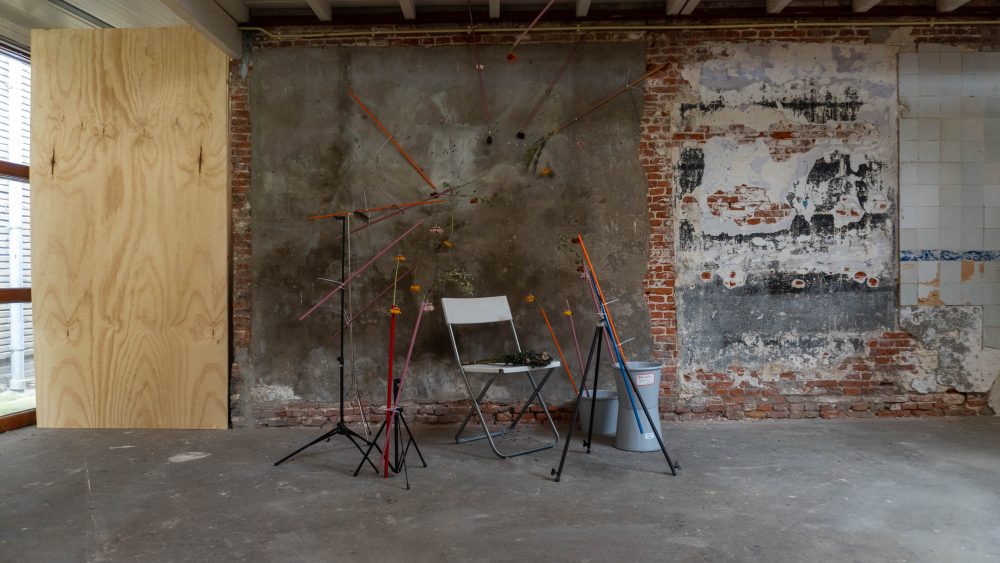
C: On the first day, the plan was that we would make a film anyway. At that time we did not know whether we would be open to the public, so the film could be shown online, and possibly also physically in SYB itself.
J: For me that was a switch, from the idea of actually building an installation in the space, to a film. The need for a fixed installation was also no longer really there with the advent of the idea of the film instead of a live performance.
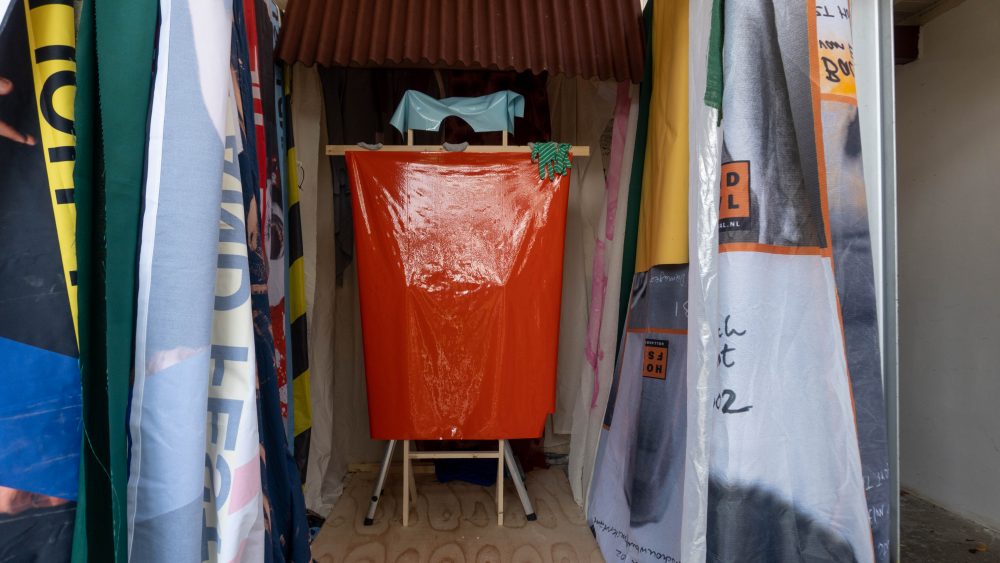
C: What I often said to people was that it helped that we were there together. That when one of us didn't feel like it or wasn't inspired, you could say to each other: OK, let's do this then! And that you could go along with it. Or that one could be busy while the other didn't want to be busy. That you also go faster in your process.
J: I think so too. In the beginning I also had trouble thinking of which steps to take because it's also a collaboration. But then it was nice to be able to react to something you had made.
C: If we were just sitting there we would be working there in a much more planned way.
J: now there were also moments that I thought to myself I'll just go on for a while, because I'm doing this together and I trust that we'll get somewhere. (Jesse laughs a little)
C: Yes, you also have a kind of responsibility to the other person to get involved.
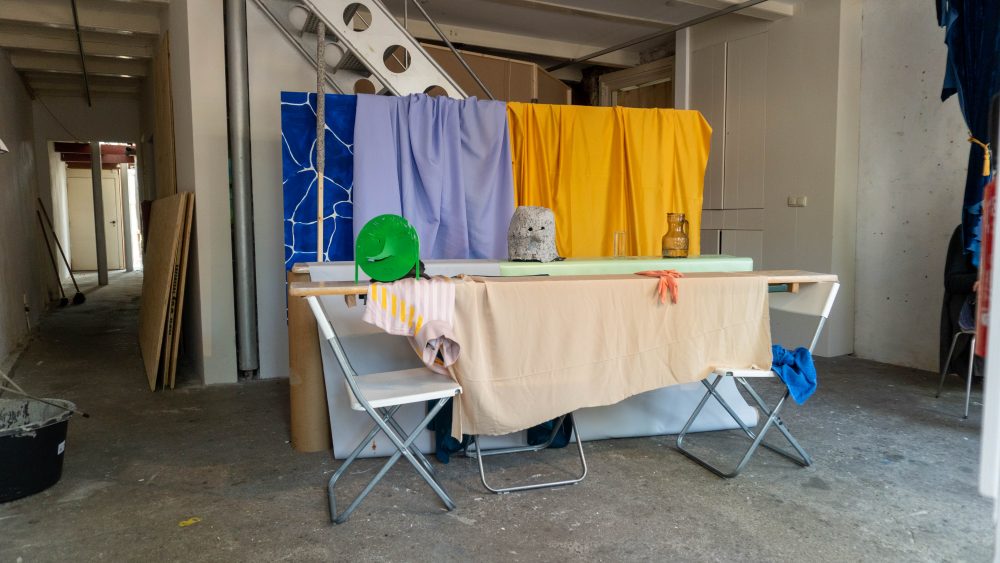
C: A surprising input was Marianne (van Aperen), for example, who dropped by. We asked her what she wanted to do and she came up with a story. We then took that dream as our starting point and spent a weekend making scenes.
J: That the people who visited us helped in different ways. Sometimes acting, sometimes helping to build and make.
C: I liked that too. That people came in and were able to decide for themselves how much influence to exert. Like Tineke, I could clearly see that she was very proud of her contribution to the film.
J: When she started looking at it that way afterwards.
C: Also that she felt ownership over the film. I didn't expect that to happen.
That's pretty special.
J: Yes
C: Hoped so.
J: Haha.
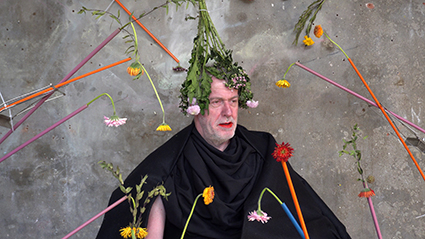
C: What I found difficult about such a residency is that you were actually constantly busy working. It is very nice to be able to take distance from everything else. You can say that everything that happens at home is put on the back burner. On the other hand, it's really hard to relax when you're in such a residency.
J: I think that's perhaps also a downside of the fact that there were two of us. You still feel responsible for keeping busy. C: In a way it was nice that we both had to go somewhere else for a while to do other work.
J; Yes exactly!
C: You also provoke each other a little.
J: Well, yes it is also....
C: Also out of enthusiasm!
J: Yes, you also feel the urge to respond to the other person. But we had set it up so that it was easy to go on like that all the time. There was no real end to the day. We could always carry out an action, precisely because we were working with enthusiasm and speed.
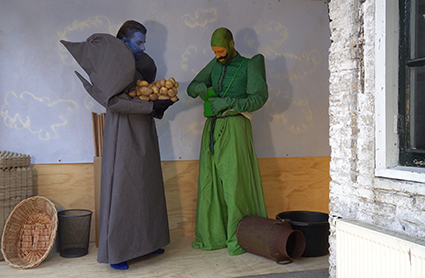
C: At a certain point it became clear that we could open to the public. We then also started to focus on what the value of the physical exhibition would be.
J: I also thought it was important that during the physical presentation you could see that we had worked there, and that as a visitor you could see the back side of the film, as it were.
C: Yes, what you do with framing within the medium of film. That you can add another layer of content that you don't necessarily have in the film itself. That you then play with what an audience sees in the film, and how that differs from what they see when they are actually there in the space.
J: You could really tell when someone was watching the film first and then the space, or vice versa. There was a distinct difference in that. How someone could place the scenes.
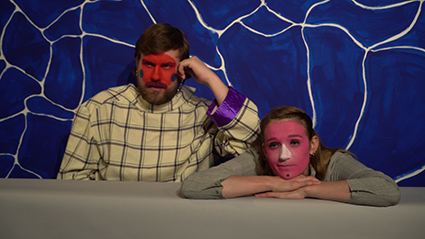
C: Are you satisfied now with what we've done?
J: Looking back, I am very happy with what we have achieved. Because I also feel that it has ushered in a new phase for me. And I'm also surprised at what we've achieved with the way we've worked. That a lot of things are right afterwards. Without us having to worry about it beforehand. I also like the fact that we came together in this project in a way, and that I was able to learn parts from you that I can now further apply. I am happy with the work, but also with the development.
J: You then?
C: I am also very satisfied. A big learning point for me was that I found out through the collaboration that it doesn't all have to be finished. The medium of film has that in it, of course. But the fact that you don't have to finish a costume or prop perfectly or zoom everything in. In that sense, I'm very happy and grateful that I can carry some more of that attitude into my other work.
J: That's why it seems so fun to make a sequel! We now have a better understanding of what happens and how things turn out with this kind of medium and in this kind of collaboration.
C: I hope that the experiment can still be the main focus, but we also have a better idea of what we are doing and which choices we are making. J: That also gives us more room to include other things.
C: Like making a live performance, I would love to see that as a follow-up.
A group of starlings flies loudly from one cherry tree to another.


